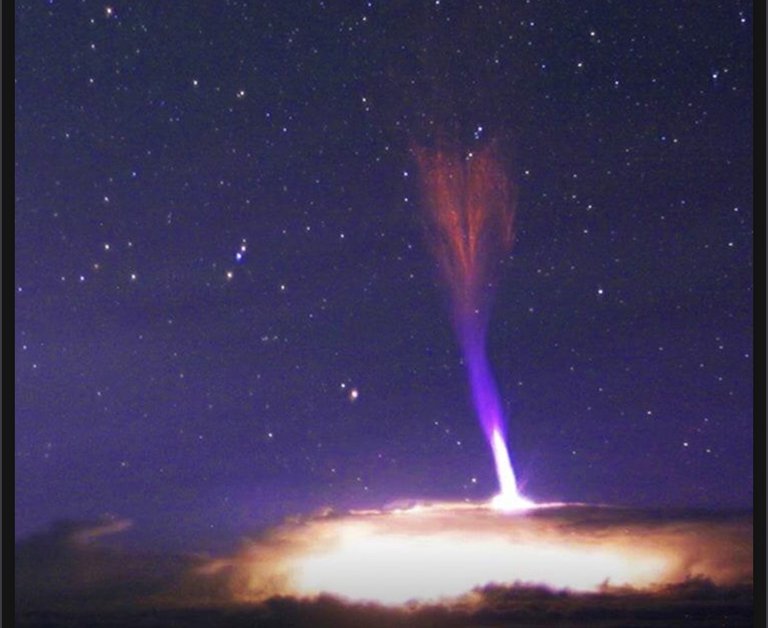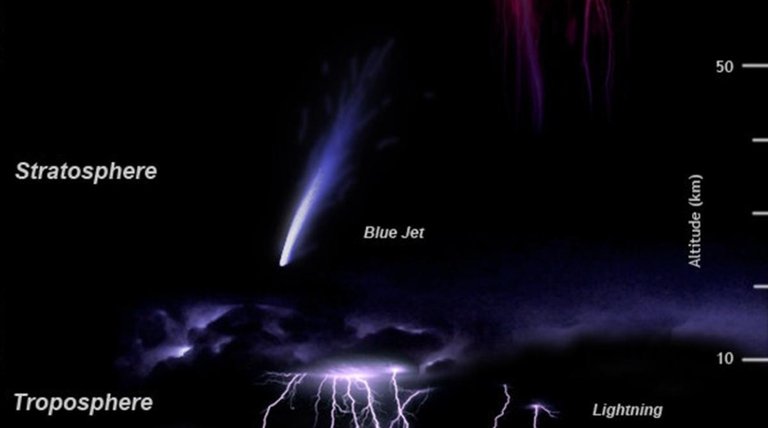Thunder and lightening; Is there Any Deal With Upside-Down Lightning?
When most people think of lightning, they think of diagonal, illuminated thunderbolts shooting down to Earth. But what happens when the lightning takes another direction? Scientists at Puerto Rico's Arecibo Observatory have been studying the phenomenon of upside-down lightning (also known as "gigantic jets") and their results have been, ahem, illuminating.
A Typical Day for A Typical Thunderbolt.
Thunderstorms start to form as warm, moist air travels upward to form a cumulous cloud, and continues to grow as more air travels upward. As the cloud grows and moves, friction from rapidly rising and falling air currents create electrical charges within it. Water droplets and ice molecules begin to form from the moist air, and their increased weight begins to pull them towards the bottom of the cloud where they add to an accumulation of negative charges. As this process happens, positive charges begin to build up near the top of the cloud.
Downward-angled thunderbolts occur when enough energy accumulates at the bottom of the cloud that it breaks free and travels towards the Earth, attracted by protons in the ground. Otherwise, those negatively charged electrons are left within the cloud. They then travel upward and are neutralized upon entering the top of the cloud's positively-charged environment. Upside down lightning is a rare exception to these rules.
Upper Atmospheric lightening and electrical discharges phenomena
Image
Lightening With a Rebellious Streak.
Climatologists hypothesize that upside-down lightning is the result of extremely strong winds pushing the positive charges out of the cloud, thus giving a thunderbolt the change to break free. These bolts can travel far! In fact, they might make it all the way to outer space if it wasn't for the Earth's ionosphere, located about 50 miles from Earth's surface.
The protons in the ionosphere act like the protons in the clouds, and cancel out the negative charges of the bolts.
Due to the high winds needed to produce upside-down lightning, scientists are more likely to observe the phenomenon during storms in the tropics than in other parts of the world. Even under those conditions, they are a rarity. In fact, only a handful have ever even been caught on film.
As the old saying goes, "lightning never strikes twice," but it seems anyone would be lucky to capture a glimpse of upside-down lightning even once.
References :


Wao its very nice seen
Thank you for this sir
No need dear just upvote
Good write Up. Like this
This is really sciences. Though thunderstorm in time past have had some various believes from different culture at times it can be used for diabolic pursposes.
This is really a nice piece of information it reminds me of my days in school studying charges
Nice work
Follow my bolt and upvote @oliverwilliams
Yes I just can't imagine myself not saying something about my path!
Following he lead of @greenrun
Wow! This is a good read for those who loves science! I teach science in the elementary grade, I appreciate this kind of post.
thank you for appreciating this post, i hope to see you around once again
and i will never let you down
thanks